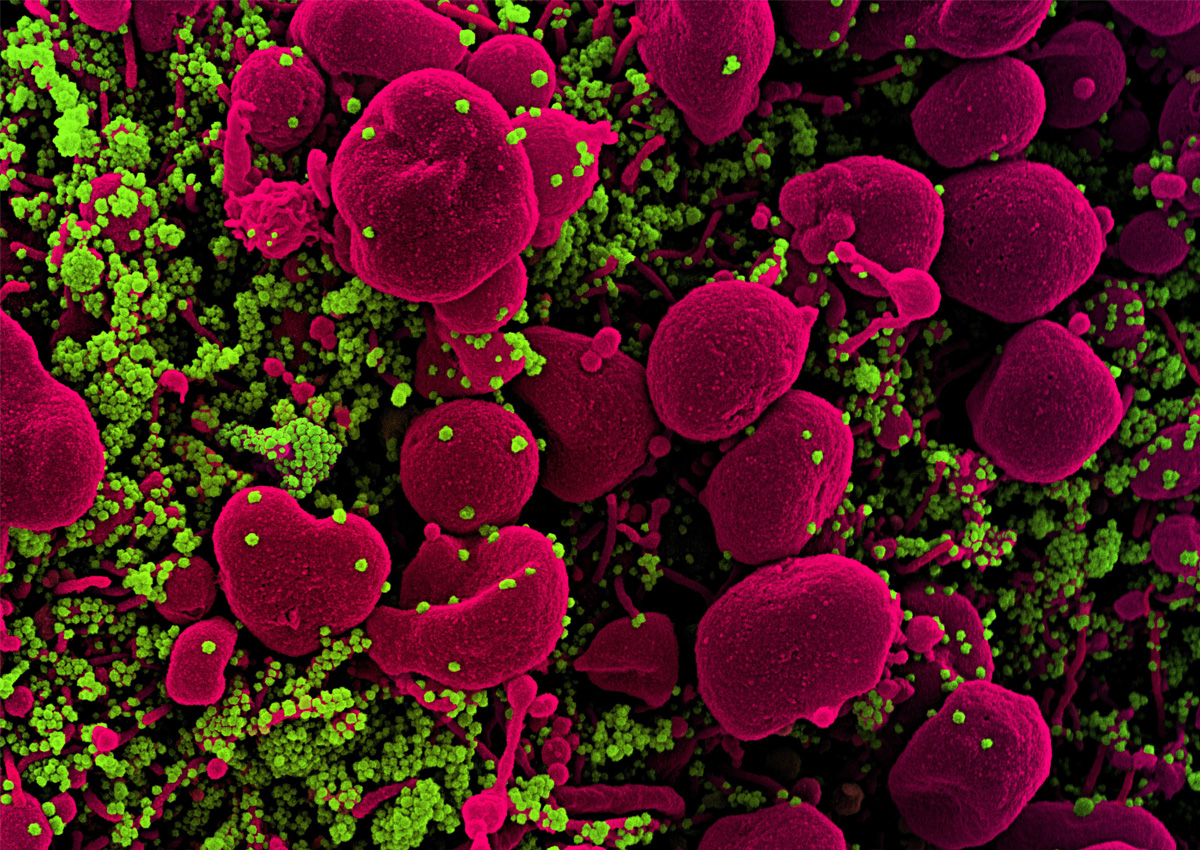
MIT-Engineered Peptide Targets COVID-19
June 24, 2020| |
Using computational models of protein interactions, researchers at the Massachusetts Institute of Technology Media Lab and Center for Bits and Atoms have designed a peptide that binds to coronavirus proteins and shuttles them into a cellular pathway that breaks them down. The researchers say this peptide has potential as a treatment that would prevent the SARS-CoV-2 virus from reproducing itself within infected cells.
Scientists from all over the world are pursuing many different strategies to develop new therapeutics against SARS-CoV-2, the coronavirus that causes COVID-19. One area of interest is developing antibodies that bind to and inactivate viral proteins such as the spike protein, which coronaviruses use to enter human cells. A related approach uses small protein fragments called peptides instead of antibodies.
The MIT team set out to engineer peptides that could strongly bind to the spike protein inside cells, and to use these peptides to trigger the cells to break down the viral proteins. They used a computational model of protein interactions that they had previously trained to optimize binding strength between two proteins. They then used their model to break ACE2 into many small fragments. The process generated about 25 candidate peptides, from which they found the best candidate, a 23-amino-acid peptide which broke down about 20 percent of the RBD proteins in the cells. To further improve the peptide's performance, the researchers used their model to simulate how its receptor-binding domain would be affected if they substituted different amino acids at each of its 23 positions. That optimization process yielded a mutant peptide that improved the degradation rate to over 50 percent.
For more details, read the article on MIT News.
| |
You might also like:
- Scientists Find Super-potent Human Antibodies from Recovered COVID-19 Patients
- CRISPR Technique 90% Effective in Reducing SARS-CoV-2 Coronavirus
- First Results from Human COVID-19 Immunology Study Identify Universally Effective Antibodies
Biotech Updates is a weekly newsletter of ISAAA, a not-for-profit organization. It is distributed for free to over 22,000 subscribers worldwide to inform them about the key developments in biosciences, especially in biotechnology. Your support will help us in our mission to feed the world with knowledge. You can help by donating as little as $10.
-
See more articles:
-
News from Around the World
- Redefinition and Harmonization in Biotech Regulation Necessary, Experts Say
- Scientists Unlock Secrets of Teff, Ethiopia's Superfood
- GM Yeast Found to Effectively Control Tsetse Flies
- Oxitec's Friendly™ Mosquito Approval Published in Federal Register; Unanimous Approvals in State of Florida
- Sugar from GM Sugarcane at Par With That from Conventional Sugarcane
- Researchers Show How Fungal Pathogen Disables Plant Defense Mechanism
- UK Environment Secretary Proposes Use of Gene Editing to Decrease Farmers' Reliance on Pesticides
-
Research Highlights
- Researchers Pinpoint Genes Involved in Rice Blast Resistance
-
Plant
- Experts Report a Multi-functional Genome Editing Method for Plants
-
Health
- MIT-Engineered Peptide Targets COVID-19
-
Read the latest: - Biotech Updates (December 17, 2025)
- Gene Editing Supplement (December 17, 2025)
- Gene Drive Supplement (February 22, 2023)
-
Subscribe to BU: - Share
- Tweet

